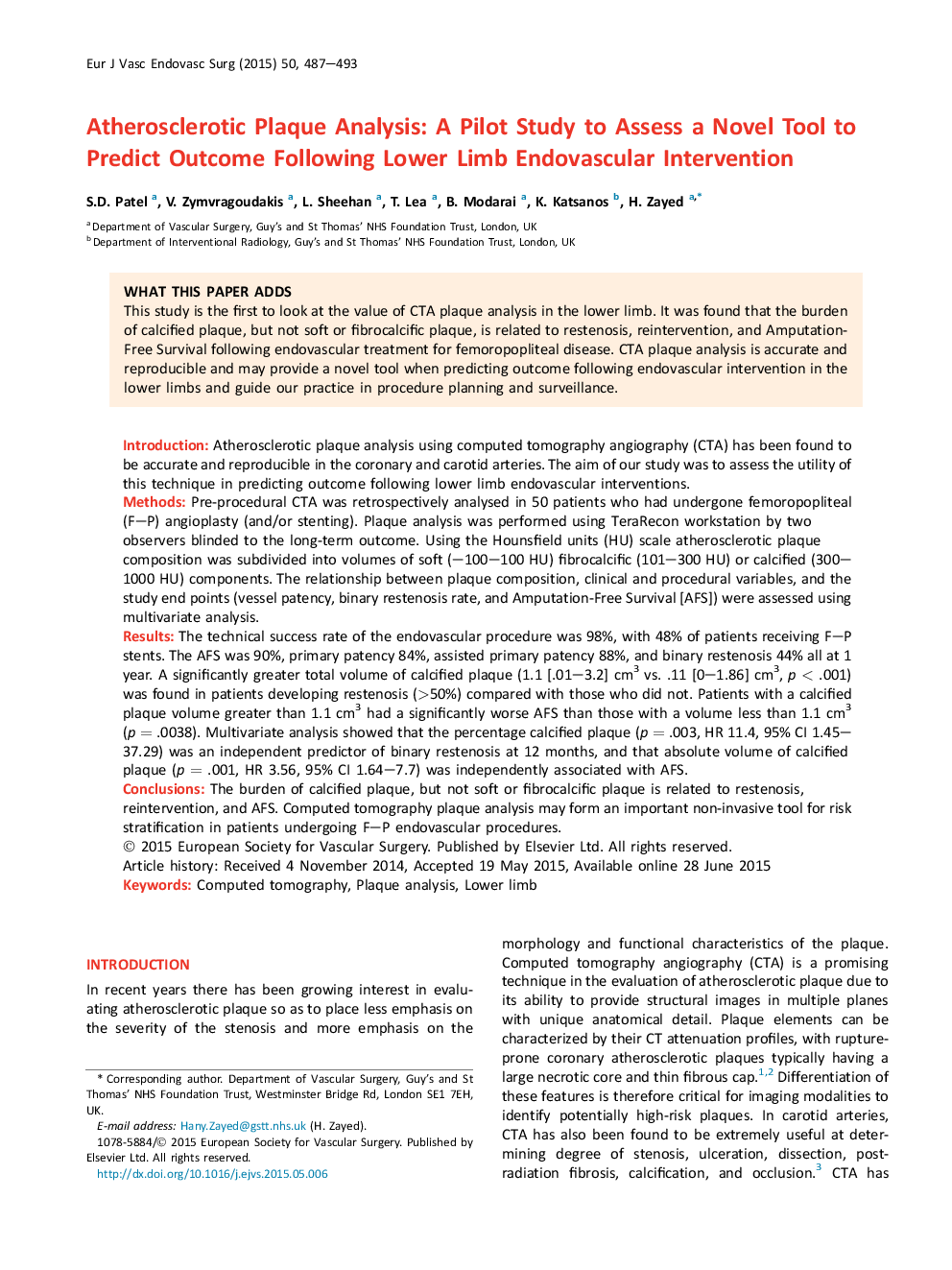| Article ID | Journal | Published Year | Pages | File Type |
|---|---|---|---|---|
| 2911956 | European Journal of Vascular and Endovascular Surgery | 2015 | 7 Pages |
IntroductionAtherosclerotic plaque analysis using computed tomography angiography (CTA) has been found to be accurate and reproducible in the coronary and carotid arteries. The aim of our study was to assess the utility of this technique in predicting outcome following lower limb endovascular interventions.MethodsPre-procedural CTA was retrospectively analysed in 50 patients who had undergone femoropopliteal (F–P) angioplasty (and/or stenting). Plaque analysis was performed using TeraRecon workstation by two observers blinded to the long-term outcome. Using the Hounsfield units (HU) scale atherosclerotic plaque composition was subdivided into volumes of soft (–100–100 HU) fibrocalcific (101–300 HU) or calcified (300–1000 HU) components. The relationship between plaque composition, clinical and procedural variables, and the study end points (vessel patency, binary restenosis rate, and Amputation-Free Survival [AFS]) were assessed using multivariate analysis.ResultsThe technical success rate of the endovascular procedure was 98%, with 48% of patients receiving F–P stents. The AFS was 90%, primary patency 84%, assisted primary patency 88%, and binary restenosis 44% all at 1 year. A significantly greater total volume of calcified plaque (1.1 [.01–3.2] cm3 vs. .11 [0–1.86] cm3, p < .001) was found in patients developing restenosis (>50%) compared with those who did not. Patients with a calcified plaque volume greater than 1.1 cm3 had a significantly worse AFS than those with a volume less than 1.1 cm3 (p = .0038). Multivariate analysis showed that the percentage calcified plaque (p = .003, HR 11.4, 95% CI 1.45–37.29) was an independent predictor of binary restenosis at 12 months, and that absolute volume of calcified plaque (p = .001, HR 3.56, 95% CI 1.64–7.7) was independently associated with AFS.ConclusionsThe burden of calcified plaque, but not soft or fibrocalcific plaque is related to restenosis, reintervention, and AFS. Computed tomography plaque analysis may form an important non-invasive tool for risk stratification in patients undergoing F–P endovascular procedures.
